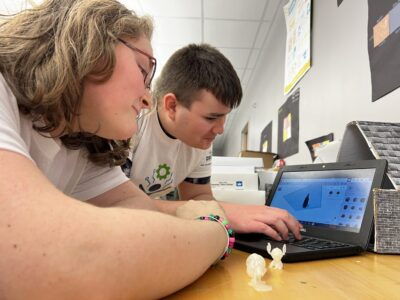Johnson College will host its 32nd Annual Johnson College Open on Friday, May 16, 2025, at the Blue Ridge Trail Golf Club in Mountain Top, PA.
All proceeds from the annual golf tournament support the Johnson College Presidential Scholarship Fund. Last year’s tournament raised over $50,000 to support the Presidential Scholarship Fund. The scholarships are presented each fall to full-time students demonstrating financial need to finish their educational journey.
To learn more about this event, visit johnson.edu/golf.
Sponsors of this event to date include:
Presenting Sponsor: The Fresh Grocer – Owned and Operated by Gerrity’s
Platinum Sponsor: NET Credit Union and ShopRite
Gold Sponsors: Eastern Atlantic Regional Council of Carpenters; Five Star Equipment; Fastenal Company; L.R. Costanzo Company, Inc.; Peoples Security Bank & Trust; PNC Bank; Simplex Homes
Silver Sponsor: American Eagle Outfitters
Cart Sponsor: Toyota of Scranton
Breakfast Sponsor: Boyle Construction
Lunch Sponsor: Cable Associates
Cocktail Hour Sponsor: Schiff’s Marketplace
Dinner Sponsor: Sordoni Construction Services, Inc.
Beverage Cart Sponsor: Widmer Signs / PA Signs
Golf Gift Sponsor: eCampus.com
Hole-in-One Sponsor: Tasca Ford
Mulligan Sponsor: Topp Business Solutions
Hit & Hold Sponsor: Nunzi’s Advertising
Exclusive Tee Sponsors: Ability Recovery Service, LLC; Action Lift; CHA Consulting; Constantino’s Catering; Greenman-Pedersen, Inc.; I.B.E.W. Local #81; Knowles Associates, LLC; McCarthy Tire; Mesko Glass and Mirror Co., Inc.; MotorWorld; NRG Controls; Postler & Joeckle; Scandale Associated Builders & Engineers, Ltd.; Simona America Industries; Stone Office Equipment, Inc; Topp Business Solutions; Torbik Safe & Lock Inc.; Waste Management;
Presidential Scholarship Sponsors: Ashley Machine & Tool Co.; Candy Frye ’94; Citizens Savings Bank, Czachor Electric; Highland Associates, Ltd.; Mesko Glass and Mirror Co., Inc.; Topp Business Solutions; Torbik Safe & Lock Inc.
Platinum Marketing Sponsor: Condron Sweda Advertising
Advertising Sponsor: Lamar Advertising
Gold Print Sponsor: Sprint Print, Inc.
Photo Caption
Sponsors of the 32nd Annual Johnson College Open met on the College’s Scranton campus in preparation for the event on Friday, May 16, 2025, at Blue Ridge Trail Golf Club in Mountain Top, PA. Proceeds from this event will support the Johnson College Presidential Scholarship Fund.
Left to right – Front Row: Chester Kaufer, Postler & Joeckle and Marcelo DeSousa, Fastenal. Second Row: Dr. Katie Pittelli, Johnson College, Brian Poveromo, American Eagle Outfitters, and Patrick Rogers, Toyota of Scranton. Third Row: Joe Fasula, The Fresh Grocer – Owned and Operated by Gerrity’s, Debbie Kolsovsky, PNC Bank, and Doug Cook, Johnson College. Fourth Row: Megan Armillay, Condron Sweda Advertising, and David Boniello ’84, Simplex Homes. Fifth Row: Bobby Lynott, Widmer Signs/PA Signs, Kathleen Martin, NET Credit Union, and Matt Locci, Eastern Atlantic States Regional Council of Carpenters. Sixth Row: Kristen Wolfe, Sordoni Construction Services, Inc., Melissa Howells, Sordoni Construction Services, Inc., and Chris Stone, Stone Office Equipment.









